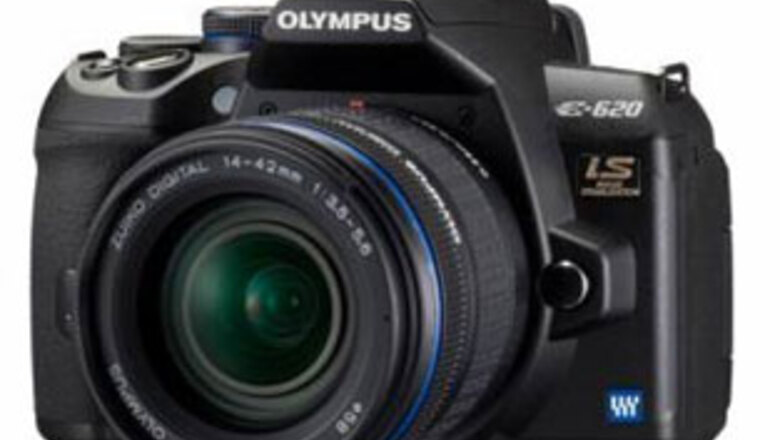
views
Olympus has announced the E-620 digital SLR camera, scheduled for release in Australia in April 2009, calling it the world's smallest and lightest digital SLR to incorporate an image stabilisation mechanism. Pricing is yet to be announced.
The new E-620 digital SLR camera weighs in at 475 grams and employs a newly developed image stabilisation mechanism that provides up to 4 EV2 steps of effective compensation and a 2.7-inch dual axis swivel LCD screen.
The E-620 features a 12.3-megapixel High-Speed Live MOS Sensor and new TruePic III+ image processing engine. It also offers class leading high-speed performance with a newly developed 7-point AF system incorporating five twin-cross type sensors for fast, accurate auto focus and high-speed sequential shooting at four frames per second.
The E-620 also offers:
- Olympus' internationally acclaimed Dust Reduction System
- Built-in flash with Commander function for wireless off-camera flash synchronization
- Auto gradation adjustment to minimise over exposure in highlights and improve detail in shadows
- Multiple-exposure function with LCD monitor display of current view superimposed on previously captured image
- Face Detection & Shadow Adjust Technology for beautifully balanced exposure of foreground subjects and background scenery
- Perfect Shot Preview to compare the effect of various setting adjustments before actual shooting
- Large optical viewfinder with 95 per cent field of view and 0.96x magnification
- Shooting information display via Super Control Panel LCD monitor display for superior visibility and operating ease
- Illuminated buttons assisting night-time shooting
- Colour Universal Design certified for enhanced interface perceptibility
- High-precision, 49-zone metering system
- Scene modes with easy activation of shooting functions via sample image selection
- Versatile bracketing functions for ISO, white balance, exposure and flash
- Lightbox view with enlargement function for easy side-by-side comparison of images
Built into the camera body, the E-620's image stabilisation can be used with all Olympus Zuiko Digital and other manufacturers' lenses that comply with the Four Thirds System standard. Effective image stabilisation is available across all focal lengths: from the super wide-angle to the super telephoto range, as well as fish eye and macro lenses.
The built-in image stabiliser also has additional settings for horizontally-oriented and vertically oriented pan action photography.
The 2.7-inch HyperCrystal III LCD monitor boasts a wide viewing angle, high contrast and wide chromatic range. It is fitted to a dual-axis swivel mechanism that enables the screen to be rotated on both the vertical and horizontal axis. The swivel screen also makes waist-level portrait shooting possible. With a maximum brightness of 1000 cd (candelas)/m2 3, photographers will be able to compose their shots with Live View activated even in bright ambient lighting conditions.
The E-620 is equipped with the image sensor based AF Live View system, first featured on the Olympus E-520 and E-420, which allows the camera to autofocus without moving the reflex mirror. When the shutter release is half-pressed during Live View shooting, the seven zone High-Speed Imager AF adjusts focus by driving the lens to detect peak contrast with the image sensor. As a result, Live View shooting is as easy and convenient as it is with a digital compact camera.
Olympus has designed a completely new image stabilisation mechanism unit specifically for the E-620. The result is a more compact stabiliser unit capable of providing up to four EV4 steps of shake compensation – the same as the E-520 – yet weighing 20 per cent less than the stabilisation unit used in the latter. Olympus has also reduced the packaging circuit board area by more than 20 per cent in comparison to to the E-520. This has been achieved through systematic reduction in the size of mounted components and component mounting pitches.



















Comments
0 comment